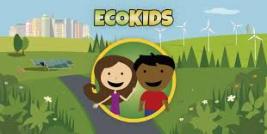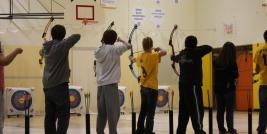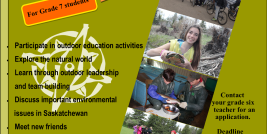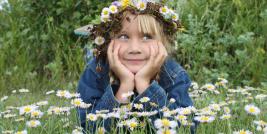The Outdoor Environmental Education 60 minute bat presentation is designed to open up the fascinating world of bats to teachers and students. The presentation consists of a slide show, taxidermy mounts of bats, a discovery display board and, if time permits, games and activities.
Content:
Students will learn:
- about various species of bats and which ones are found in Regina
- what bats eat, as well as how they detect prey through echolocation
- different habitats where bats live
- about adaptation of Saskatchewan bats to our winters
- facts about bats and their young
Set up:
- one (1) large table and data projector/screen
Related Documents:
"Facts About Bats" Blooket Game Link
Blooket is a review game similar to Kahoot. Sign up a FREE account at blooket.com to host a game. Use the link provided HERE, choose HOST, then a Game Mode (start with CLASSIC for the first round). A game code will be generated for players to join. You will now be able to Host the game on a big screen and have the students join in on their devices (blooket.com/play) with the Game ID.
| Bats Slide Presentation |
| Slide Commentary |
Outcomes |
Indicators |
||
Grade 1 |
Science |
LT1.1 Differentiate between living things according to observable characteristics, including appearance and behaviour. |
h,i,j,l |
| Science |
LT1.2 Analyze different ways in which plants, animals, and humans interact with various natural and constructed environments to meet their basic needs. |
a,c,e,f,g,h,i,j |
|
| Science |
DS1.2 Inquire into the ways in which plants, animals, and humans adapt to daily and seasonal changes by changing their appearance, behaviour, and/or location. |
a,c,d,f |
|
Grade 2 |
Science |
AN2.1 Analyze the growth and development of familiar animals, including birds, fish, insects, reptiles, amphibians, and mammals, during their life cycles. |
b,c,e,f,g |
| Science |
AN2.3 Assess the interdependence of humans and animals in natural and constructed environments. |
a,d,e,f,g |
|
Grade 4 |
Science |
HC4.1 Investigate the interdependence of plants and animals, including humans, within habitats and communities. |
a,c,f |
| Science |
HC4.2 Analyze the structures and behaviours of plants and animals that enable them to exist in various habitats. |
b,c,g |
|
| Science |
HC4.3 Assess the effects of natural and human activities on habitats and communities, and propose actions to maintain or restore habitats. |
e,j |
|
| Grade 6 | Science |
DL6.1 Recognize, describe, and appreciate the diversity of living things in local and other ecosystems, and explore related careers. |
b,d |
| Science |
DL6.3 Analyze the characteristics and behaviours of vertebrates (i.e., mammals, birds, reptiles, amphibians, and fish) and invertebrates. |
b,e |
|
| Science |
DL6.4 Examine and describe structures and behaviours that help:
|
c,d,f,g,h,i |
|
| Grade 7 | Science |
IE7.2 Observe, illustrate, and analyze living organisms within local ecosystems as part of interconnected food webs, populations, and communities. |
i,j,l |





